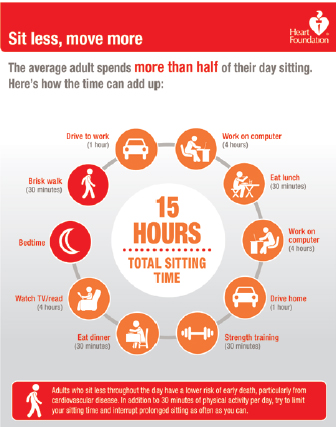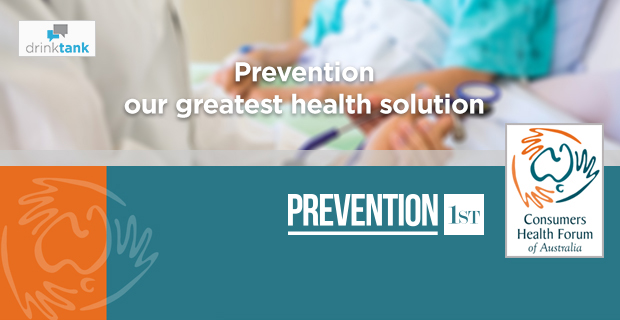Every two years, the Australian Institute of Health and Welfare publishes a hefty tome that chronicles, in great detail, the state of the nation’s health.
The current edition, Australia’s Health 2014, came with an emphatic warning: “Chronic disease – Australia’s biggest health challenge”.
Chronic disease, it cautioned, accounts for 90 per cent of all deaths and 85 per cent of the total disease burden.
“From any perspective, the size of the chronic disease problem in Australia is large.” Australian Health Survey data reveals that:
- one third of the nation – seven million people – has at least one chronic condition
- more than one million Australians have heart or vascular disease, or had suffered a stroke
- 999,000 are living with diabetes, and
- 360,000 are living with cancer.
By any measure, chronic disease takes an immense toll on this nation. Premature death and suffering touches nearly every family.
But chronic disease also has a much greater impact on some population groups. Those bearing the brunt of the burden include those who are socio-economically disadvantaged, those living in rural and remote areas and Aboriginal and Torres Strait Islanders.
The economic cost is also great. Cardiovascular disease alone accounts for $7.7 billion in direct healthcare costs each year, or 10.4 per cent of total disease expenditure.
While cardiovascular disease is the most expensive disease group, the top four costly chronic conditions — the others are oral health, mental health and musculoskeletal conditions — together conservatively account for more than a third of all allocated health expenditure.
Though the human and economic impact of chronic disease is immense, there is good news, and the good news comes in two parts.
First, much of the disease burden can be prevented or postponed.
And second, investment in prevention can be highly cost-effective, and often cost-saving.
For example, a Department of Health study in 2003 found reduced smoking rates resulting from tobacco control campaigns have – on conservative estimates – yielded net bene?ts of $2 billion in the three decades between 1970 and 2000, averting more than 17,000 deaths in 1998 alone.
The study also showed that, between the 1970s and 1990s, tobacco control, physical education and other programs to reduce heart disease cost $810 million. But these yielded bene?ts estimated to be worth an astounding $9.3 billion.
There are, of course, numerous other examples, covering everything from road safety to immunisation. But the message is clear.
We can – and must – do more to prevent disease before it starts.
We can – and must – do more to detect those who are about to get sick and prevent disease progression.
And for those living with chronic conditions, we can – and must – do more to reduce morbidity for those living with disease.
This can be achieved through primary and secondary prevention.
But are we, as a nation, putting enough emphasis on prevention?
In general, investment in public health is seen in terms of the share of the government health budget dedicated to prevention and related activities.
The latest data, released by the AIHW in September (for the ?nancial year 2013-14) reveals that Australians collectively spend just 1.5 per cent of total health outlays on public health. That’s down from 2.3 per cent in 2007-08.
Disturbingly, this puts us in the lowest third of OECD nations, well behind the class leader, New Zealand, on 7 per cent and Canada, on 5.9 per cent.
For a nation that prides itself on innovation and leadership in preventive health, this is a very sorry result.
In the Heart Foundation’s Budget submission, we have called for a staged increase in investment in prevention, to lift the current rate from the miserly 1.5 per cent to 5 per cent over time. This should be funded by a modest allocation from tobacco and alcohol taxation and potentially from a health levy on sugar sweetened beverages as well.
Greater investment in public health is a highly achievable objective that can be reached without dif?culty, even in tough economic times.
There are some encouraging signs that the message is not being lost on those who have their hands on the biggest levers of change – our politicians.
The Health Minister, Sussan Ley, has embarked on an ambitious primary care reform agenda that will, she says, lead to more comprehensive care for those with chronic and complex conditions.
In August, she said that, as the population ages, “we know that the prevention and treatment of chronic disease is an increasing challenge for the health system and Australians generally. Not only do half of all Australians have a chronic disease, but one-in-?ve have at least two of the most common eight chronic disease including diabetes, cardiovascular disease and mental health conditions.”
Even the former Treasurer, Joe Hockey, acknowledged the need to put more emphasis on active ageing, declaring after releasing the Intergenerational Report in March that:
… longevity is one thing and age expectancy is one thing, that’s terrific. But the other thing we need to think about is how active we are during the course of our lives.
There are also encouraging signs that a broader community – including the business community – are waking up to the need for greater investment.
The recent national reform summit, convened under the auspices of News Limited and Fairfax newspapers, drew together business, unions and welfare groups, among others. They concluded that;
Rising public debt reduces opportunities for public investment in areas such as education, training, research and development, innovation, infrastructure, childcare and preventative healthcare, which can achieve strong economic and social returns.
 Even more compelling for those concerned with the state of the nation’s coffers, was the Productivity Commission’s research report on Ef?ciency in Health earlier this year.
Even more compelling for those concerned with the state of the nation’s coffers, was the Productivity Commission’s research report on Ef?ciency in Health earlier this year.
Though the report receive scant attention, it deserves close reading.
It suggests that Australia is “missing good opportunities to invest in preventive health”.
A critical point, especially in these times of ?scal restraint, is that prevention measures do not necessarily come with big price tags or without any price tag at all. Many are not only cost-effective, but cost-saving.
Taxes on tobacco, alcohol and sugar-sweetened beverages – measures which have substantial public support – can raise much needed revenue, some of which should be used to support greater investment in prevention.
Regulation can also be used, for example, to improve information disclosure, protect children from advertising of energy-dense, nutrient poor foods and decrease the salt content of processed food.
Investment in early detection of people at high risk of diseases such as heart disease, stroke, kidney disease and diabetes, should also be supported so we can stop disease before it starts.
There are some good things happening. We are continuing to invest in tobacco education campaigns, plain packaging of tobacco products laws are being defended against international trade challenges and there is a continuing emphasis on the high rates of smoking amongst Aboriginal and Torres Strait islanders. The Health Star Rating system is being rolled out and – we hope – the national food reformulation program will soon be re-started.
But there is much more to be done.
This has been emphatically recognised in Australia’s Health, which concluded that the challenges presented by an ageing population and the prevalence of overweight and obesity, along with the chronic diseases they initiate, “are fertile areas for the attention of prevention research, policy and action for the foreseeable future”.
Australia should also pay heed to the global commitment to address chronic disease – or non-communicable disease as it is termed by the World Health Organisation.
Following a summit at the United Nations in 2011, the world has embraced a series of global chronic disease targets and indicators. These were signed off by all WHO members — including Australia — in 2013.
The WHO members agreed to focus on four major disease groups – including heart disease and cancer – and six major risk factors: tobacco use, physical inactivity, salt intake, harmful use of alcohol, obesity/diabetes and raised blood pressure.
The Heart Foundation in Australia sees some clear priorities, including:
- Australia needs a national physical activity action plan, with inactivity and sedentary lifestyles contributing to an estimated 14,000 deaths a year. We have commenced a Move more, Sit less! advocacy campaign to secure commitments from major parties ahead of the next election.
- We need a national obesity prevention action plan, including a stronger emphasis on a national food reformulation program.
- We must keep the pedal to the metal and ensure our commitment to tobacco control doesn’t go off the boil.
- We need to provide an incentive to support implementation of the integrated health check – combining a cardiovascular risk assessment, kidney and diabetes check – in general practice. This is – in essence –a prevention measure that can ensure people at high risk of heart attacks and strokes and other vascular diseases can be identi?ed and managed to keep them alive and well and out of hospital.
Australia is starting to talk the talk. We now need to walk the walk. If chronic disease is our biggest health challenge, prevention is the greatest health solution.
This post was first published in the Consumers Health Forum of Australia journal, Health Voices, Issue 17, November 2015








Add comment